The iPhone XS & XS Max Review: Unveiling the Silicon Secrets
by Andrei Frumusanu on October 5, 2018 8:00 AM EST- Posted in
- Mobile
- Apple
- Smartphones
- iPhone XS
- iPhone XS Max
Display Measurement
Apple first introduced OLED panels in the iPhone X last year – and this year’s iPhone XS and XS Max are a continuation of the same designs. The XS’s panel ticks off all the features that are possible to have in a display – OLED, high resolution, wide gamut with colour management, and HDR display with official support of HDR10 and Dolby Vision. The panel is manufactured by Samsung Display, but is said to be a contracted design as blueprinted by Apple.
Among one of the questions I’m still asking myself, is who designed and is providing the display’s DDIC? OLED displays' DDICs are even more important than LCDs', because they not only control colour, but also have to control the active matrix power delivery, and thus the DACs that actually power on the individual pixels.
The iPhone’s display is still a scanning PWM powered panel, meaning the pixels are not actually continuously on, but pretty much work the same way a CRT beam would work – only instead of a single pixel, we have a partial vertical band across the display. The reason for this is just the sheer complexity of running the active-matrix: each subpixel needs to be controlled to 1024 voltage levels to represent the colours of the 10-bit panel. On top of that, the DACs need to have sufficient bit-depth to also provide a seamless range of brightness levels. Here saving on the DAC bit-depth by controlling brightness by PWM is a good workaround the issue.
The iPhone XS’ displays are really excellent at first sight, offering fantastic viewing angles. Personally however, I still have some reservation about the bezel design; Apple has been bested when it comes to screen-to-body ratio by other Android vendors, and I expect to see even more devices come out with what are true full device face screens.
The display’ pixel density doesn’t quite match other 1440p smartphones in terms of sharpness, but it’s still plenty sharp enough for the vast majority of people.
As always, we thank X-Rite and SpecraCal, as measurements are performed with an X-Rite i1Pro 2 spectrophotometer, with the exception of black levels which are measured with an i1Display Pro colorimeter. Data is collected and examined using SpectraCal's CalMAN software.
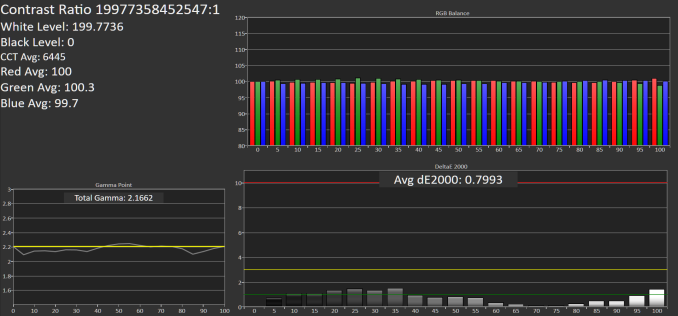
SpectraCal CalMAN
XS :
XSM:
In terms of greyscale accuracy, both the iPhone XS and iPhone XS Max present outstanding accuracy, coming in at an astonishing deltaE2000 of 0.79 for the XS and 1.64 for the XS Max. My Max unit seemed to lack intensity in the green channel, which reduced its accuracy score.
Both phones came in very close to the target 6500K of the D65 illumination point, in practice they’re very much perfect white.
Brightness wise, my XS maxed out at 646cd/m², while my XS Max came in at 668cd/m². There is no auto-brightness boost, however at such high brightness levels, there’s no need. Minimum brightness goes down to a little under 2 nits, allowing for comfortable night-time reading.


iPhone XS - iPhone XS Max
SpectraCal CalMAN
If one were to nit-pick, then it’s about the gamma measurement as the XS seemed to undershoot the 2.2 target, resulting in ever so slightly darker images, while my XS Max overshot it, resulting in brighter images. Still both were very much within imperceptible levels, so it’s not a great concern.
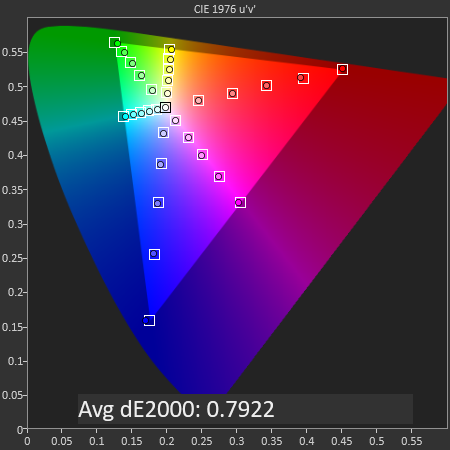
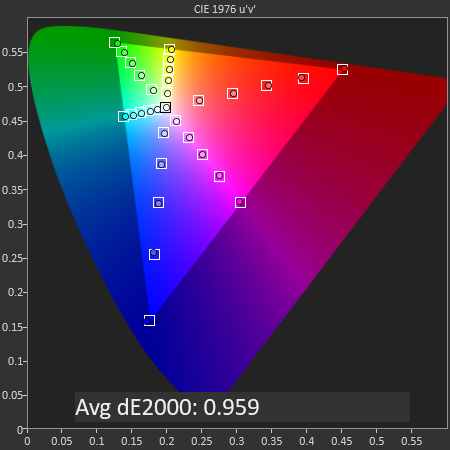
iPhone XS - iPhone XS Max
SpectraCal CalMAN
By default, the XS display and software interpret non-wide gamut tagged content as sRGB. Measuring the saturation accuracy here, we see some amazing results from both phones. The XS posted an amazing dE2000 of 0.79 – this is so low that it’s nigh-impossible to get much better, even when manually calibrating a display. The XS Max fared a bit worse at 0.95, but still below 1 which still deserves it the commendation of being excellently accurate.
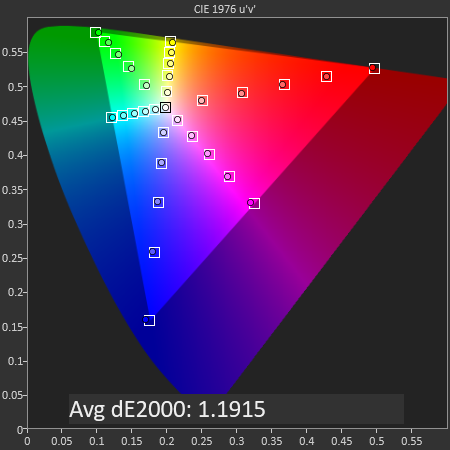
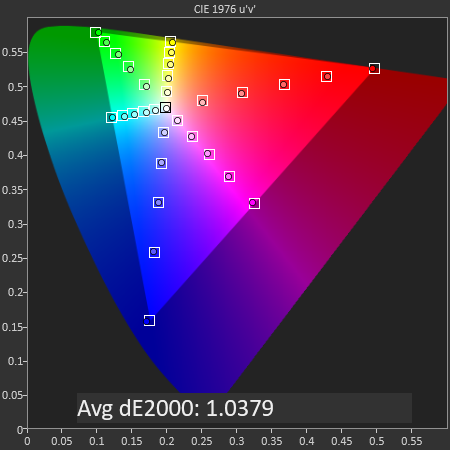
iPhone XS - iPhone XS Max
SpectraCal CalMAN
When the application supports it, and the media has a wide gamut profile embedded, the iPhone XS displays are able to showcase the higher colour intensities of this wider colour gamut. Apple pretty much standardised “Display P3” in the mobile world – a display mode with the gamut of DCI P3, yet with an identical gamma target of 2.2 of sRGB, ensuring seamless interoperability of both gamuts within a display.
Again, both the iPhone XS and the XS Max showcase outstanding calibration with respective dE2000 of 1.19 and 1.03.
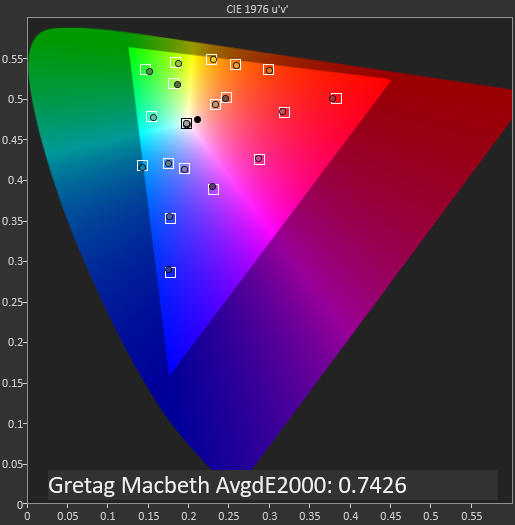
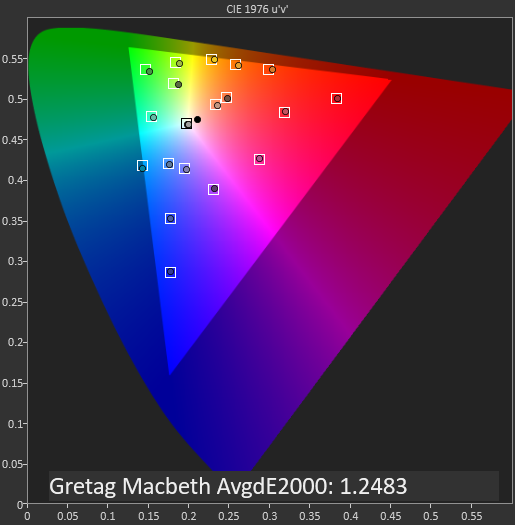
iPhone XS - iPhone XS Max
SpectraCal CalMAN


iPhone XS - iPhone XS Max
SpectraCal CalMAN
The Gretag Macbeth colour targets contain commonly encountered colours, such as skin tones and other colour samples. This test checks not only if the display is able to display the correct colour hue, but also the luminosity.
Again, the iPhones are able to show outstanding figures. The 0.74 score of the iPhone XS is I think the lowest figure we’ve measured on any kind of display, which is amazing. My XS Max figures scored a bit worse, it’s likely that the green channel weakness is part of what’s causing it to be better.
Overall, the iPhone displays are just outstanding. These are the best calibration results we’ve come to measure not only in a smartphone, but likely any display. I have literally nothing negative to say about them, and in terms of picture quality, they are just the best displays on the market.
Display Power
I was curious to see how the new XS fared against last year’s X – as it’s possible there might have been some under-the-hood improvements in terms of panel or emitter materials.
Unfortunately, it looks like the iPhone XS is nigh identical to the iPhone X when it comes to the power characteristics of the panel. My iPhone X had reached just a bit higher brightness and extended up the power curve a bit, but otherwise any differences can just as well be attributed to random manufacturing fluctuations.
| Screen Luminance Power Efficiency 100% APL / White @ 200nits |
||||||
| Device | Screen Luminance Power at 200cd/m² |
Luminance Power (mW) / Screen area (cm²) Efficiency |
||||
| LG G7 | 257 mW | 2.93 | ||||
| LG G6 | 363 mW | 4.43 | ||||
| P20 | 411 mW | 4.86 | ||||
| Galaxy S9 | 563 mW | 6.69 | ||||
| P20 Pro | 601 mW | 6.74 | ||||
| Galaxy S8 | 590 mW | 7.01 | ||||
| iPhone X | ~671 mW | ~8.31 | ||||
| iPhone XS | ~736 mW | ~9.11 | ||||
Comparing the power efficiency at 200cd/m² and normalising the luminance power of the devices for their screen area, we see that the iPhone X and XS fall a tad behind other Samsung OLED panels. I think what this could be attributed to is the 10-bit colour depth of the Apple phones, as their DDIC and the active matrix would need to do more work versus the 8-bit counterparts.
One thing to also very much to take into account is the base power consumption of the phones. The iPhone X, XS and XS Max all fluctuate around 480-500 mW when on a black screen, which is around 150mW more than the iPhone 8 LCD models. This might not sound much, but’s it’s an absolutely huge figure when taking into account that it’s an unavoidable power consumption of the phone whenever the screen is on. I do hope Samsung and Apple alike would be able to focus more on optimising this, as like we’re about to see, it will have an impact on battery life.


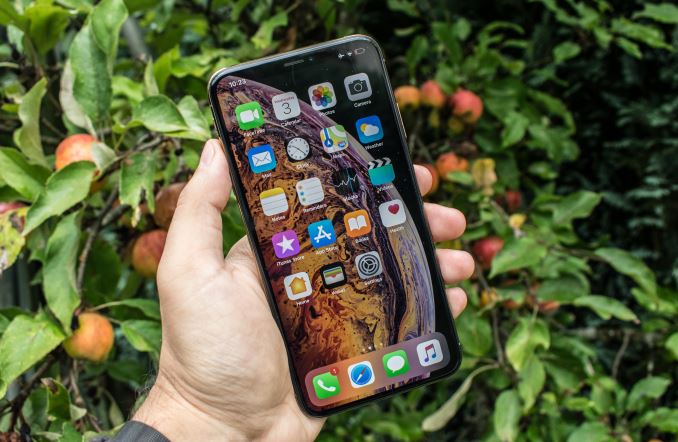
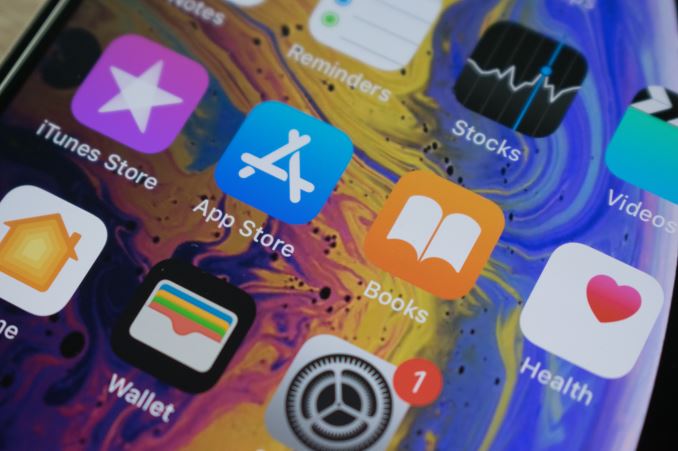
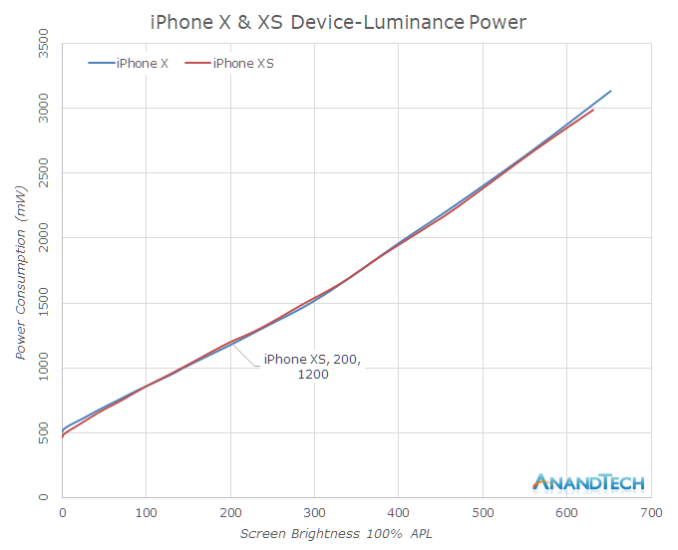








253 Comments
View All Comments
name99 - Saturday, October 6, 2018 - link
If you're going to count like that, you need to throw in at least 7 Chinook cores (small 64-bit Apple-designed cores that act as controllers for various large blocks like the GPU or NPU).[A Chinook is a type of non-Vortex wind, just like a Zephyr, Tempest, or Mistral...]
There's nothing that screams their existence on the die shots, but what little we know about them has been established by looking at the OS binaries for the new iPhones. Presumably if they really are minimal and require little to no L2 and smaller L1s (ie regular memory structures that are more easily visible), they could look like pretty much any of that vast sea of unexplained territory on the die.
It's unclear what these do today apart from the obvious tasks like initialization and power tracking. (On the GPU it handles thread scheduling.)
Even more interesting is what Apple's long term game here is? To move as much of the OS as possible off the main cores onto these auxiliary cores (and so the wheel of reincarnation spins back to System/360 Channel Controllers?) For example (in principle...) you could run the file system stack on the flash controller, or the network on a controller living near the radio basebands, and have the OS communicate with them at a much more abstract level.
Does this make sense for power, performance, or security reasons? Not a clue! But in a world where transistors are cheap, I'm glad to see Apple slowly rethinking OS and system design decisions that were basically made in the early 1970s, and that we've stuck with ever since then regardless of tech changes.
ex2bot - Sunday, October 7, 2018 - link
Much appreciate the review!s.yu - Monday, October 8, 2018 - link
Great job as always Andrei!I would only have hoped for a more thorough exploration of the limits of the portrait mode, to see if Apple really makes proper use of the depth map, taking a photo in portrait mode in a tunnel to see if the amount of blur is applied according to distance for example.
Mic_whos_right - Tuesday, October 9, 2018 - link
Thanks for this comment--Now I know why nothing last year. Great Anandtech standard of a review! Always above my intellect of understanding w/ info overload that teaches me a lot of the product.Moh Qadee - Thursday, November 1, 2018 - link
Thank you for this great detailed review. I have been coming back to this review before making a purchase. Please make an comparison article of Iphone XS gaming vs other smartphones in market. How much does thermal make difference over longer periods before it starts to throttle or heat up. Would be able to give an approx time before you noticed heat while gaming on XS? I don't mind investing in an expensive phone as long as thermals doesn't limit the performance. There are phones like Razor 2 or Rog out. People make an comparison with an iPhone as it doesn't require much cooling. I wonder if gaming for above 20+ mins makes it challenging for Iphone to heat up enough that you should be worried about?Ahadjisavvas - Monday, November 19, 2018 - link
And the exynos m3 had 12 execution ports right? Can you elaborate on the major differences between the design of the vortex core in the a12 and the meerkat core in the m3? I would deeply appreciate it if you could.Ahadjisavvas - Monday, November 19, 2018 - link
And the exynos m3 has 12 execution ports right? Can you elaborate on the main differences between the design of the exynos m3 and the vortex core,that'll be really helpful and informative as well. Also,are you planning on writing a piece about the a12x soc, it'll be really interesting to hear how far apple has come with the soc on the 2018 ipad pro.alysdexia - Monday, May 13, 2019 - link
"Now what is very interesting here is that this essentially looks identical to Apple’s Swift microarchitecture from Apple's A6 SoC."This comparison doesn't make sense and it seems like you took the same execution ports to determine whether the chips are identical, when the ports could be arbitrary for each release. Rather I took the specifications (feature size, revision) and dates of each from these pages: https://en.wikipedia.org/wiki/Comparison_of_ARMv7-... and https://en.wikipedia.org/wiki/Comparison_of_ARMv8-... to come up with these matches: Cortex-A15-A9 A6, Cortex-A15-A9 A6X, Cortex-A57-A53 A7, Cortex-A57-A53 A8, Cortex-A57-A53 A8X, Cortex-A57-A53 A9, Cortex-A57-A53 A9X, Cortex-A73 A10, Cortex-A73 A10X, Cortex-A75 A11, Cortex-A76 A12, Cortex-A76 A12X. For exemplum 5 execution ports could be gotten (I'm no computer engineer so this is a SWAG.) from the 3 in Cortex-A9 subtracted from the 8 in Cortex-A15 but the later big.LITTLEs with 9 and 5 ports could be split from 7 or 8 as (7+2)+(7−2) or (8+1)+(8−3). You need to correct the Anandtech and Wikipedia pages.
faster -> swifter, swiftlier
ISO -> iso -> idem
's !-> they; 1 != 2
great:small::big:lite::mickel:littel
RSAUser - Friday, October 5, 2018 - link
I still don't like iOS tendency towards warmer photos than it is irl.DERSS - Saturday, October 6, 2018 - link
It is weird because it is warmer in bright light and bleaker in dim light.Why can not they just even it out, make the photos less yellowish in bright light and less bleak in dim light?